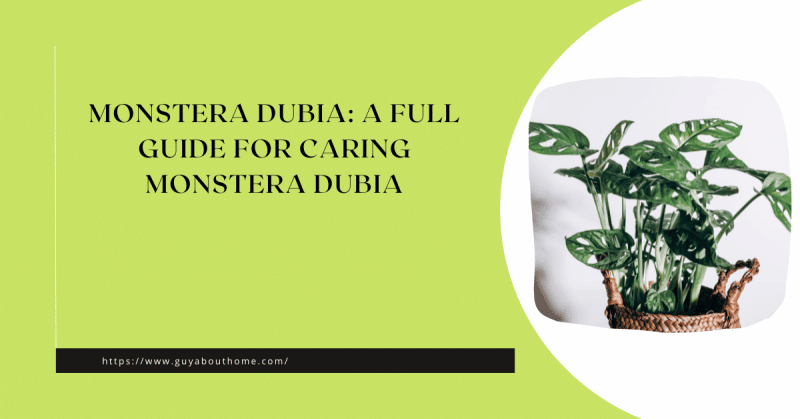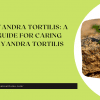https://www.youtube.com/watch?v=_LliQA0hQaA
Thank you for reading this post, don't forget to the best blogger Guy About Home who offers the best garden and home improvement tips! If you are a home decor and design fan, don't miss the tips on home ideas. If you are a home garden owner, then you might be interest in our complete guides to house plants!
Monstera Dubia may seem a new name to you since it is a lesser-known Monstera variety and is one of the smallest. However, this plant is gorgeous and is an excellent addition to the house of a plant lover. Moreover, if you already have other Monstera species, this one is worth adding to the collection.
You will get flowers in this plant only after it hits maturity; otherwise, you will just have to enjoy its appearance. Since Dubia has a good height, the leaves of this plant lay flat against the moss pole or the post that you use to give support.
What is Monstera Dubia?
As mentioned, Monstera Dubia is a small Monstera species that is often difficult to find. This plant is a vine climber that stands out among others because of its unique appearance. The plant is originally from Central and South America, and the amount of heat in these regions is relatively high.
If you plan to keep this plant at your home, you will need a pole to help it grow since it is a climber. It will keep growing if you choose to keep this plant outside in direct sunlight. The height of this plant is impressive, even if grown indoors. It has beautiful leaves that are heart-shaped and pop out of the plant. The leaves are variegated and usually yellow and green.
Without further ado, let us dive into the other details of this plant.
Features Of Monstera Dubia
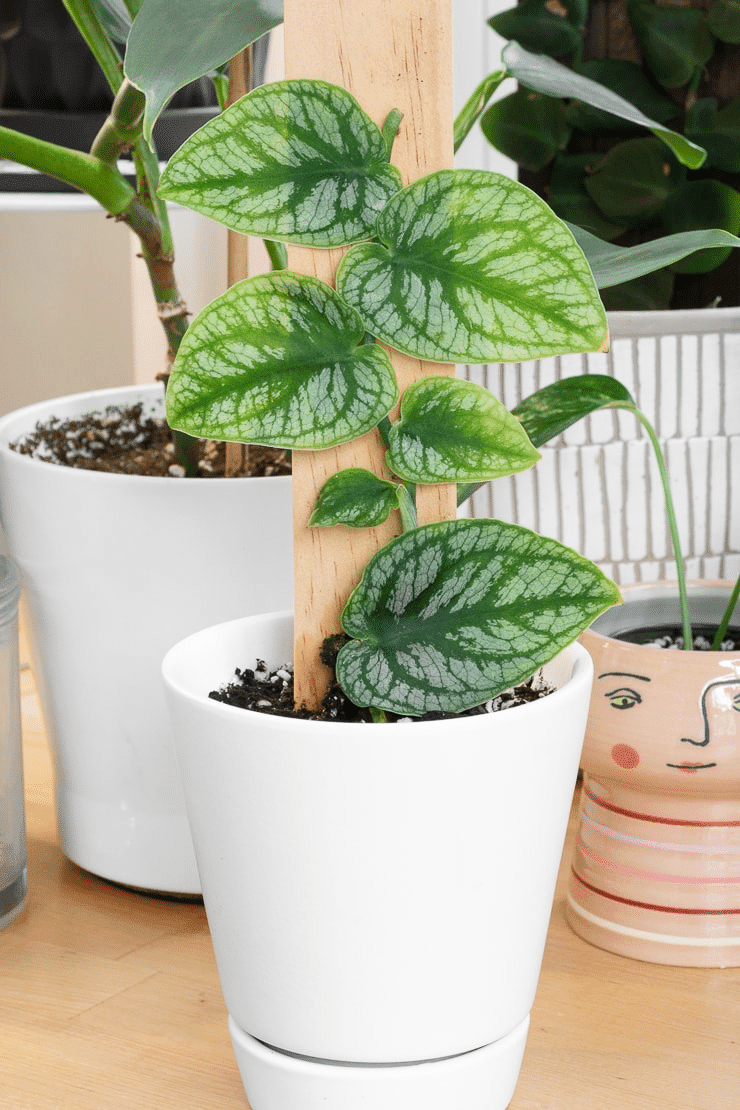
Image Source: Pinterest
The Monstera Dubia plant is also known as the Shingle Plant, and its structure and features make this a unique choice. Similar to monstera siltepecana fenestration, you can easily differentiate a Monstera Dubia from other plants with the help of its following features:
- Structure and Height: The spread and the length of the vine depend greatly on the space available for the plant to grow. Present growing conditions also impact the structure of the plant. If you choose to grow this plant in nature or open space, you can get a plant that is 25m long. When grown indoors, the plant may require frequent trimming. That said, Monstera Dubia may stay below six feet.
- Foliage and Step: When the plant has not grown completely and is still a sapling, the leaves will be small and measure somewhat around 2-3 inches. They are oval and are in different shades of green. Most often, the leaves may also have evergreen variegation. When the plant matures, you may notice its leaves grow up to a foot long. During this time, tiny pores and holes may also occur on the leaves.
- Toxicity: You should keep in mind that Monstera Dubia is naturally toxic. That said, ensure to take all necessary precautions when caring for the plant and ensure that it doesn’t have kids and pets around.
- Flowers: The flowers of this variety often don’t show and are salmon-colored. Most of the flowers bloom when the earliest leaves mature during the juvenile stage. You should also note that people rarely see the plant bloom. This fact is true when you let this plant grow indoors. To make sure that your Monstera Dubia blooms and flowers, you need to provide proper support to the plant on a totem.
How Big Does Monstera Dubia Get?
Monstera Dubia is a plant that has three completely different stages of foliage. This plant surprisingly grows into indistinguishable various forms during its entire lifetime. During the juvenile stage, its leaves are oval-shaped and only 2-3 inches long. During this stage, the plant resembles Trachyandra Tortilis, whereas it ends up looking like its sibling, Monstera Deliciosa when it grows.
The plant will grow to its full extent in open space, and you may expect to have a 25 meters long species. Whereas, if the growing conditions differ, you will not get a plant of the same spread.
Why Is Monstera Dubia So Expensive?
If you are convinced by the features of Monstera Dubia and plan to add one to your collection, then be ready to pay a pretty penny to buy this plant. Like monstera petola, this species is not very common in the world of houseplants, and hence, you will have to pay a good amount to get this one since the supply for this variant is less.
It takes years for one plant to occur, and hence, it is not very common. You will find this variety only in the collection of true plant lovers since they have paid a good price for it.
Not confident in planting an indoor plant? Why not getting power from our inspiring indoor plants quotes?
How Much Does A Monstera Dubia Cost?
Monstera Dubia is an expensive plant because it is a rare species. The plant is gorgeous, though, and you will enjoy taking its care. The price may differ depending on its availability with the seller. Though the plant is not the easiest to find, the price laid and efforts to find one are worth it.
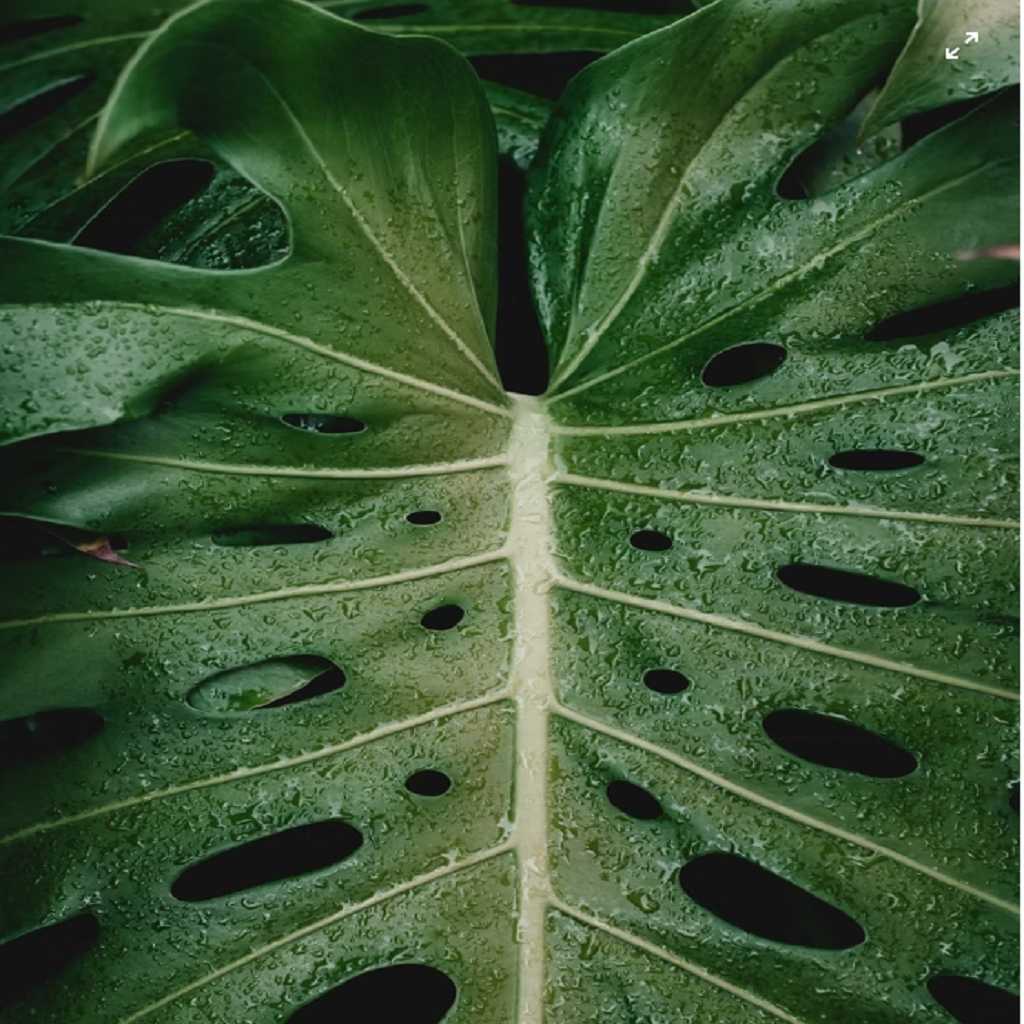
Monstera Dubia may cost you somewhere around $500-1000. The range may increase further if there is an acute shortage of the variegation. The plant has unique features and is beautiful enough to get added to any houseplant collection. The plant is also a low-maintenance plant, similar to that of longevity spinach.
How To Propagate A Monstera Dubia?
It is very easy to multiply monster Dubia plants. One of the most effective ways of propagating monstera dubia is through step cutting. For propagating this beautiful plant, cut a healthy stem from the plant just below the nodes.
Make sure that the cutting has at least 2-3 nodes and a minimum of 2 leaves. You can either place this cutting in water or soil. When propagating in water, make sure to use a container without any drainage holes at the bottom.
Change the water of the container every alternate day. Once you start noticing the plant’s roots, you can transfer it to the soil or leave it in water if you wish. However, you should know that the plant will grow much faster in the soil than water. The same is the condition with Hoya Pubicalyx.
When placing the cutting in the soil, you should always use a good rooting hormone.
Both the methods of propagation work equally well. However, propagating in water is easier since you can see the growth of the roots in water.
Besides this plant, we also make a full care guide on how to propagate Philodendron Painted Lady.
How To Care For Monstera Dubia?
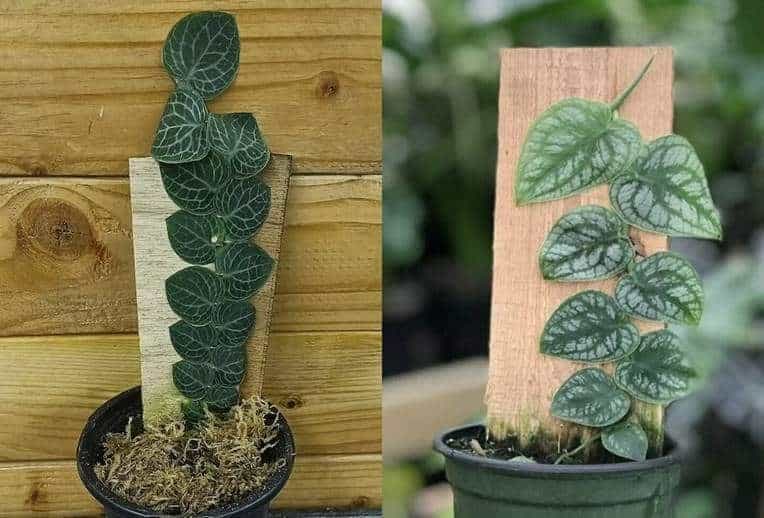
Here are some tips that will help you take care of monstera dubia:
No worries! Though you might encounter the difficulties when learning how to care such an plant as a new plant caring starter, we got the most popular plant lover quotes that can partner with you and you are going to succeed in plant care and grow.
Besides this plant, we also make a full care guide on how to care for Monstera standleyana.
Watering
Monstera dubia loves humidity. Same as monstera borsigiana, the plant generally likes humidity levels above 50%, ensuring that your monstera dubia stays in a healthy condition keeps the plant moist. You can do this by spraying water on the leaves of the plant once or twice a day. Water the plant properly. If you have the plant in a container, make sure you water until you see water seeping through the drainage hole at the bottom. When you notice that the soil is only slightly damp, water the plant again.
Keep the soil moist but not wet. A good method to check if your plant needs water is to touch the soil; if the soil sticks to your fingers, the soil has water, but if it doesn’t stick to your fingers, it is time to give the thirsty plant some water!
Soil
The potting mix for monstera dubia should be nutrient-rich, it should hold enough water, and at the same time, it should not be very clay-like. You can combine bark or perlite with coconut coir or coco peat along with some garden soil and compost. This potting mix will give the soil nutrients it needs; it will hold water so that there is enough for the plant, but it will not keep the soil too wet if the soil is very clay-like, then the risk of root rot increases.
A good way to check if the soil is not clay-like is to fill the potting soil in a container with drainage holes at the bottom. Now water the soil thoroughly; if the water comes out of the drainage holes within a minute, your soil is perfect. If the water takes too long to come out of the drainage holes, you should add either coco peat or perlite to the potting mix.
Fertilizer
Monstera dubia likes to feed during summers and winters. Winters are dormant periods for these plants, and so they don’t need many nutrients during this period.
You can feed your plants with organic compost during spring and summer such as vermicompost or seaweed once every 15-20 days. You can also use slow-release fertilizer sticks if you want. Use these sticks according to the instructions mentioned in their packet.
Repotting
Monstera dubia doesn’t require repotting very often. You should ideally pot the plant after every 2 or 3 years. However, if you notice roots growing out of the drainage holes, then you should consider repotting the plant. Monstera dubia is a very delicate plant when it comes to repotting. Make sure you are very gentle throughout the process. The best time to pot monstera dubia is in the summer because the plant grows well in summers.
Make sure to water the plant two days before you repot the plant. This will soften the roots, and thus you will be able to easily take the plant out from its pot.
Losses the soil before taking the plant out. You can do this with the help of an appropriate gardening tool. Take out as much soil as you can and then finally pull the plant very slowly. Dust the soil off from the roots using a brush or your fingers; however, be very careful in this process. Once you have brushed the soil away, see if you can notice any disease on the roots.
After inspection, it is time to place the plant in a bigger container to have more space to grow.
Now place the plant in the container and add the potting mix mentioned earlier. Make sure the plant is straight, and then press the soil very gently. Don’t add any extra fertilizer to the plant for at least the next 3 to 4 months. The plant might take a few days to a few weeks to adjust to a new space. The same is the case with Macodes Patola.
Pruning
Monstera dubia needs frequent pruning once it starts growing. Just as monkey face orchid, if you find any discolored or damaged leaves, you should cut them off. Use a sharp and sterile knife or scissors to cut the leaves or any other part of the plant.
Where To Buy Monstera Dubia?
Monstera dubia is a widespread plant, and you can easily find it in your local gardening shops or in a nursery nearby. If you can’t find the plant offline, you can buy it from several online stores such as Amazon, Etsy, or any online gardening store. Alternatively, you can place orders for these plants on online ecommerce stores and you will receive them as soon as they are available. You can also try searching for these plants on Facebook marketplace.
The Bottom Line
Monstera dubia is a vivacious plant to grow. It is extremely gorgeous and can be easily grown at home. Although it needs a little attention, there is no need to stress over it. Just a little extra attention and care is enough for the plant to grow into a healthy and lively plant that will become the center of attraction of your home. All you need to do is buy the plant, pot it in a corner where it gets ample sunlight and you are good to go! The best part about this plant is that it is very easy to propagate, so you can multiply as many mini Monstera dubia as you want!
For more amazing ideas you can have, visit Guy About Home today or you can check the related blogs:
- How To Remove Gunk And Clean The Bathroom Sink
- fix leather couch tears
- leather couch care
- 14 Kitchen Cleaning Tips for Effective Cleaning
- Bedroom Cleaning Checklist: A Step by Step Guide
- how to clean
- How to Clean Garbage Bins
For more step-by-step ideas, diy tips and guides, kindly visit the website guyabouthome.com providing the best garden & home improvement tips.


